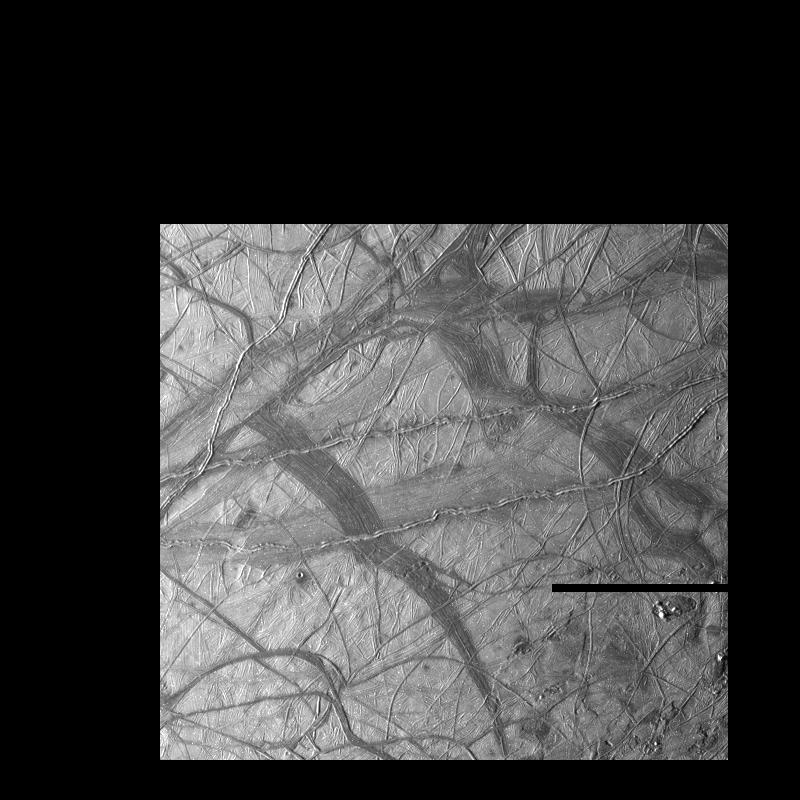All Resources
Ridges on Europa

This view of Jupiter's moon Europa shows a portion of the surface that has been highly disrupted by fractures and ridges. This picture covers an area about 150 miles (238 kilometers) wide by 140 miles (225 kilometers), or about the distance between Los Angeles and San Diego. Symmetric ridges in the dark bands suggest that the surface crust was separated and filled with darker material, somewhat analogous to spreading centers in the ocean basins of Earth. Although some impact craters are visible, their general absence indicates a youthful surface. The youngest ridges, such as the two features that cross the center of the picture, have central fractures, aligned knobs, and irregular dark patches. These and other features could indicate cryovolcanism, or processes related to eruption of ice and gases.
This picture, centered at 16 degrees south latitude, 196 degrees west longitude, was taken at a distance of 25,290 miles (40,973 kilometers) on Nov. 6, 1996 by the Galileo spacecraft solid state imaging television camera onboard the Galileo spacecraft during its third orbit around Jupiter.


